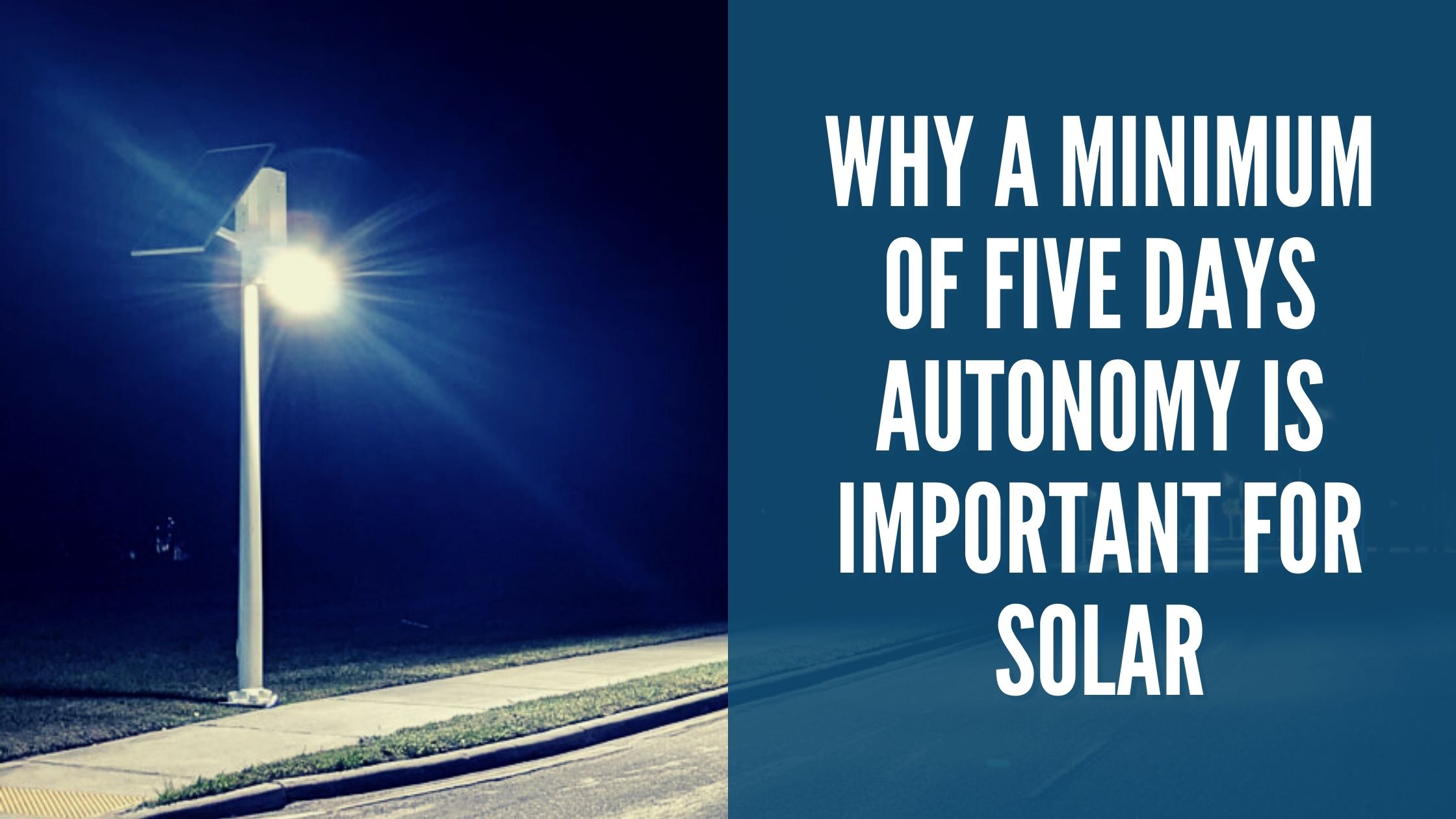I am often asked why a minimum of five days of autonomy is used when sizing off-grid solar power systems for lighting or remote power locations are used, so I figured I’d write a quick post about this to explain. There are a lot of factors that go into sizing off-grid solar lighting systems, but one of the most important factors is autonomy. Here’s why:
Sometimes the sun doesn’t come out tomorrow
There are times where it is overcast or rainy all day and the sun doesn't even come out. Those days are best spent under a blanket with a hot cup of chocolate and a movie.
There is always some solar radiation hitting the earth no matter what, so on these days, your solar panels are doing some work, but not a lot. You can’t always guarantee it will fully charge the battery back to full, even if the sun peaks out for a little while.
At night, the lights will still need to turn on, the equipment will still need to have power. Ensuring there are at least five days of autonomy will make sure that your lights will run still even after a couple of overcast and cloudy days. No one wants to be left in the dark after some bad weather.
Batteries need to last to make the system cost-efficient
Rechargeable batteries come with a set number of cycles. To make the batteries last, using only a fraction of the power out of them before recharging them will make sure they last longer than if drained to completion after every use.
Using such items as a low voltage disconnect and oversizing the batteries for at least five days, seven or more in areas with the low sun can guarantee the batteries will last the full five to seven years. This lowers the maintenance of the system and reduces the number of times you have to replace the batteries.
The temperature will affect your battery
Heat and cold both affect battery life and need to be considered when sizing off-grid solar. The GEL batteries SEPCO uses works until -40°C/F with only a depth of discharge change to 60% in most climates. This means that 40% capacity is lost during the cold winter months.
Installing batteries with no ventilation in hot climates also causes problems. Our NEMA3R boxes allow for plenty of ventilation while protecting the wiring and connections from rain. Sizing for a minimum of five days makes sure there is plenty of power for times of extreme heat and cold, making sure the systems work properly.
After everything is said and done, a minimum of five days of autonomy will ensure your systems work under almost any condition. Remember, if you are in the far north, sizing for seven days or more would be recommended as the winter provides less sun and harsher conditions than southern areas. So next time you are looking for an off-grid solar light or power system, make sure you are getting a properly sized battery bank to keep the system running perfectly all year round.



